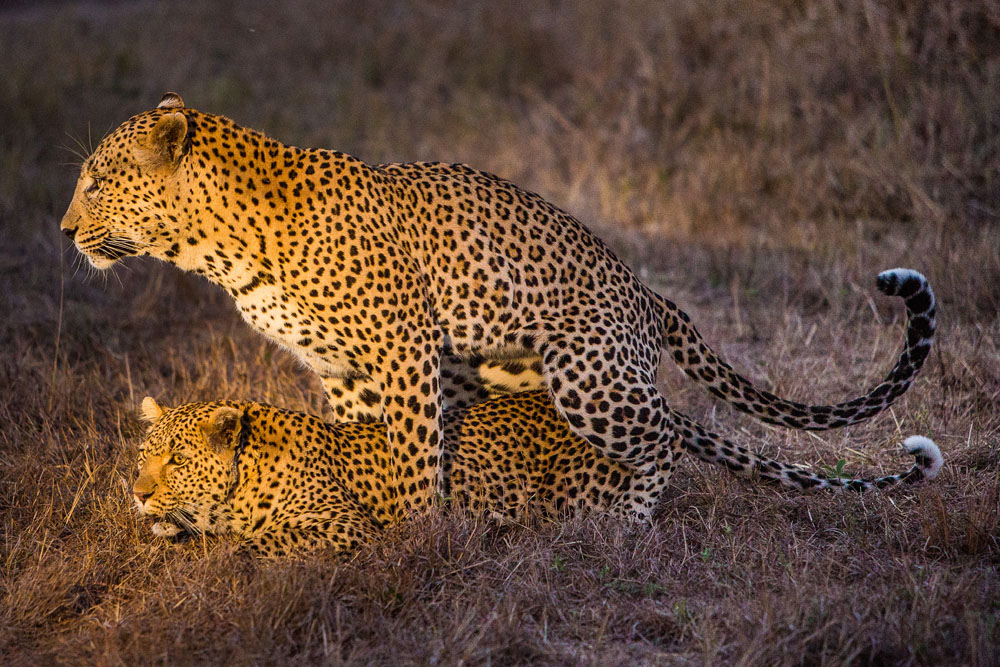The Secrets Behind The Big Cats’ Mating
on Dec 14, 2014The last few weeks here at Sabi Sabi have been filled with mating cats. Both the leopards and lions have been at it. We have had the Kruger males mating with three of the older females of the Southern Pride. The two dominant male leopards have also been mating with the resident female leopards.
Both leopards and lions have exactly the same mating rituals which, when averaged out, has them mating every 15 minutes for up to 5 days. This means that if they last a full 5 days, they can mate more than 250 times. This may seem a little excessive, but there is a good reason for this. In humans, females produce an egg every 28 days. If it is not fertilised, the egg and the lining of the uterus will be discarded. This does not happen with leopards though. The act of producing something that is not used is a waste of energy, so the female leopard requires a stimulus to start ovulation.







The female leopard will therefore go into oestrus. This is a state in which her hormones are at a level at which she is able to produce eggs. She will also leave a scent in her urine which will indicate to the male that she is ready to mate. As she enters oestrus the female will begin to mark her territory more often than usual and will call to attract the dominant male in the area. He will latch onto her scent using a gland on his palate called the organ of Jacobson, which is able to measure hormone levels and determine whether or not the female is ready to mate.
Once the mating begins it is a non-stop affair, filled with uneasiness and violence. In order to stimulate the female to ovulate, the male has barbs on his penis which dig into the female. When the penis is retracted it hurts the female causing her to lash out at the male. As the mating ritual continues she will produce eggs. Due to his weak sperm, a male leopard has to mate with a female often enough to ensure that fertilisation takes place.
It is interesting to note that current research suggests female leopards can tell whether or not a male is capable of being the territorial male and remain dominant for a long period of time. If she determines that he is not, she has the ability to make herself less fertile. This is because if she conceives and the male is ousted from his territory, a new male will kill her existing cubs. If this happens she would have completely wasted her energy.
It has also been established that females will mate with more than one male within a very short period, thus lowering the chances of infanticide. This is particularly important for female leopards whose territories overlap those of two dominant males. Infanticide in leopards accounts for 40% of cub deaths and is therefore one of the major considerations for females when choosing a mate.







